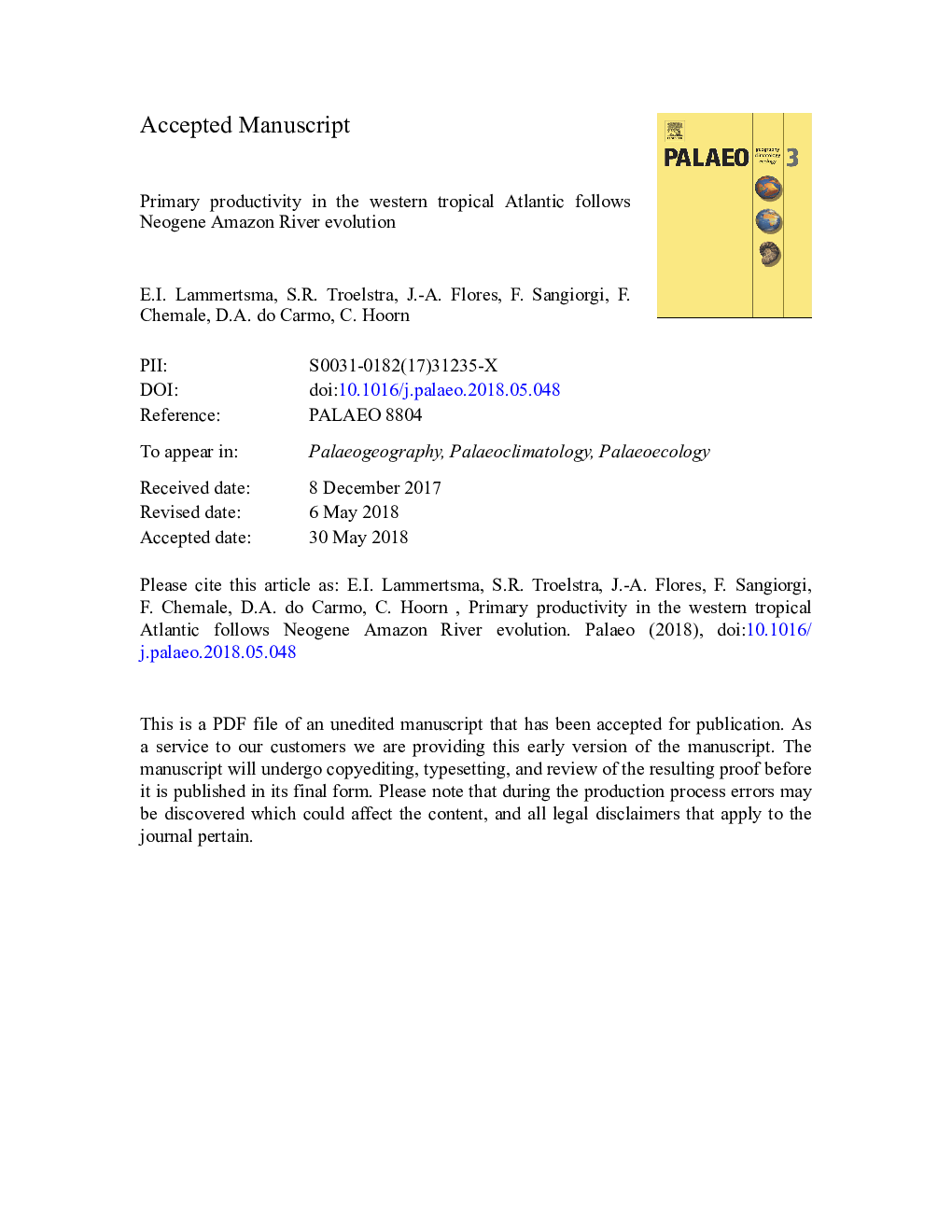| کد مقاله | کد نشریه | سال انتشار | مقاله انگلیسی | نسخه تمام متن |
|---|---|---|---|---|
| 8868093 | 1622086 | 2018 | 38 صفحه PDF | دانلود رایگان |
عنوان انگلیسی مقاله ISI
Primary productivity in the western tropical Atlantic follows Neogene Amazon River evolution
ترجمه فارسی عنوان
بهره وری اولیه در غرب آبی غربی گرمسیری به دنبال تکامل رودخانه آمازون نئوژن است
دانلود مقاله + سفارش ترجمه
دانلود مقاله ISI انگلیسی
رایگان برای ایرانیان
کلمات کلیدی
طرفدار آمازون، حاشیه ای استاتیکی برزیلی، نئوژن، فرامینیفر، کیست های دینوفلاژلاتی آلی دیواره،
موضوعات مرتبط
مهندسی و علوم پایه
علوم زمین و سیارات
فرآیندهای سطح زمین
چکیده انگلیسی
The Amazon River nutrient-rich plume currently triggers large-scale phytoplankton blooms in the otherwise oligotrophic western tropical Atlantic Ocean. Little is known about the onset and development of this high productivity system, although a direct link to the transcontinental Amazon River evolution can be expected. The Amazon submarine fan, located on the Brazilian Equatorial Margin (BEM), contains a unique sediment archive of the river's history and associated environmental changes in the marine realm. This study represents the first marine microfossil multi-proxy approach applied to any sedimentary record in the submarine fan area for the time interval encompassing the onset and development of the transcontinental Amazon River system. To reconstruct Miocene to Pleistocene changes in surface- and bottom water conditions we analyzed organic-walled dinoflagellate cyst- and benthic foraminiferal assemblages, respectively. Moreover, terrestrial- and freshwater palynomorph abundances were studied to provide a link between fluvial input and marine environmental changes. In addition, a planktonic foraminiferal biostratigraphy is constructed to verify the available calcareous nannofossil-based age model. Our data show that in the early- mid Miocene up to ~13â¯Ma limited fluvial input reached the BEM and primary productivity was elevated, after which distinctly low productivity conditions prevailed. After the birth of the transcontinental Amazon at ~9â¯Ma surface water productivity initially increased slightly. Consistently high surface water productivity and decreased bottom water oxygenation followed increasing terrestrial input after the (early) Pliocene. The temporal consistency between records from the Amazon Fan and the more distant Ceará Rise reflects large-scale marine environmental changes followed the development of the Amazon River, likely related to increased climatic variability in the Amazon Basin during the Plio-Pleistocene.
ناشر
Database: Elsevier - ScienceDirect (ساینس دایرکت)
Journal: Palaeogeography, Palaeoclimatology, Palaeoecology - Volume 506, 1 October 2018, Pages 12-21
Journal: Palaeogeography, Palaeoclimatology, Palaeoecology - Volume 506, 1 October 2018, Pages 12-21
نویسندگان
E.I. Lammertsma, S.R. Troelstra, J.-A. Flores, F. Sangiorgi, F. Chemale Jr., D.A. do Carmo, C. Hoorn,
